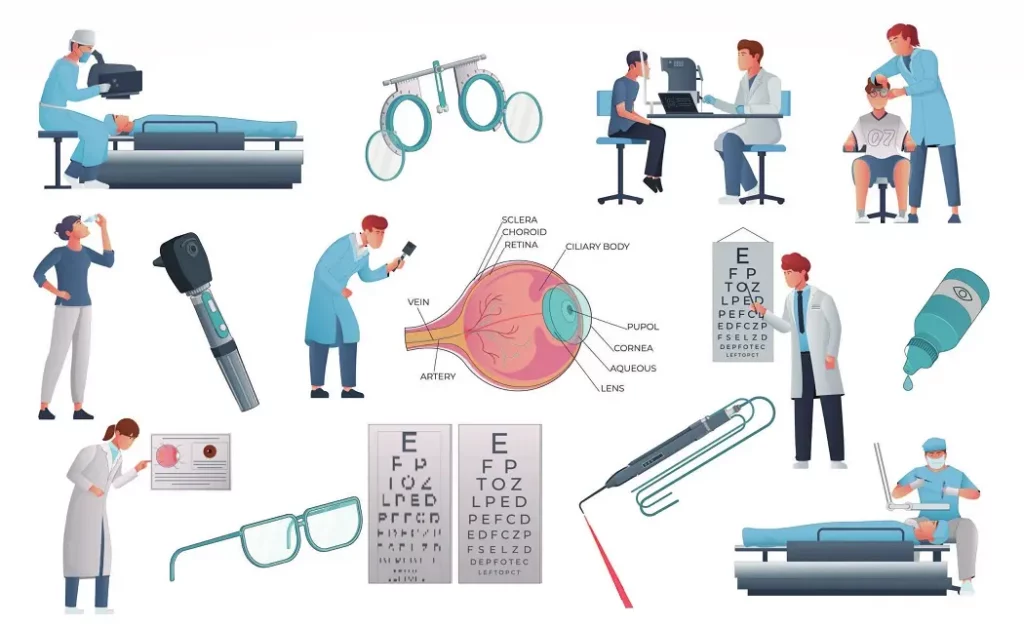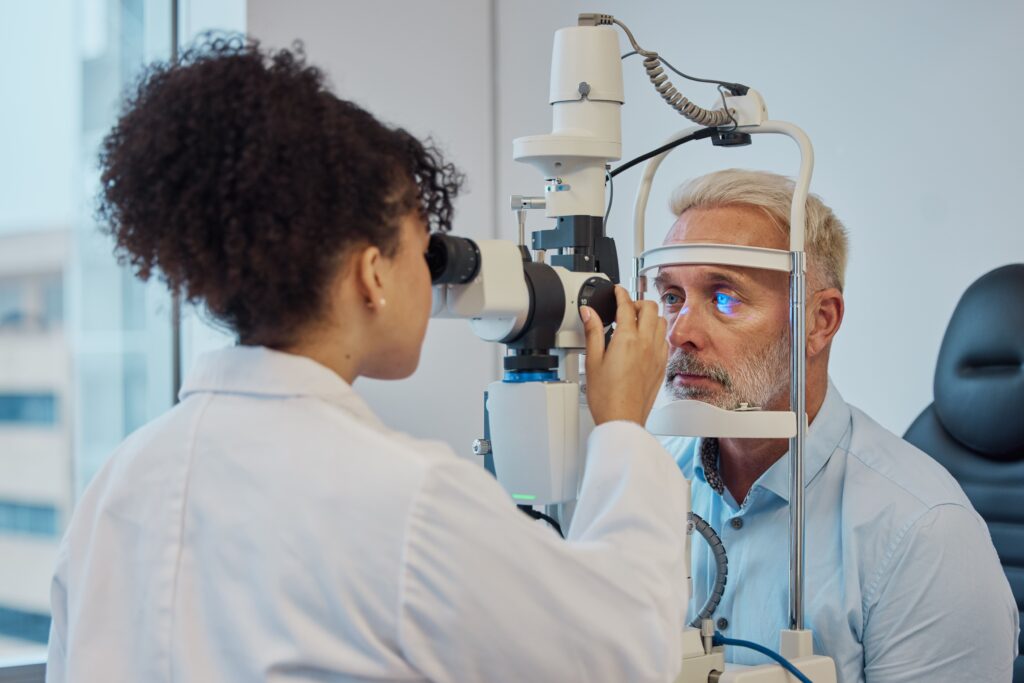All Categories
Featured
Laser eye surgery has actually transformed vision modification, providing millions of individuals a choice to glasses and get in touch with lenses. For many years, developments in modern technology and techniques have substantially enhanced the safety, precision, and end results of these treatments. Let's check out the sophisticated advancements shaping the future of laser eye surgical treatment.
Among the most cutting-edge developments is wavefront-guided LASIK. This innovation uses in-depth 3D mapping of the eye to recognize distinct blemishes in an individual's vision. Unlike conventional LASIK, which focuses primarily on dealing with conventional refractive mistakes like astigmatism, farsightedness, and nearsightedness, wavefront technology addresses higher-order aberrations that can impact evening vision and comparison sensitivity. The outcome is sharper, more precise vision customized per client.
![]()
Unlike LASIK, which entails producing a corneal flap, SMILE only requires a small incision to remove a slim layer of cells (lenticule) from the cornea. This technique preserves corneal stamina and lowers the risk of dry eyes.
![]()
The introduction of femtosecond lasers has reinvented corneal surgical procedure. These ultra-fast lasers operate with incredible precision, allowing specialists to develop smoother and a lot more predictable cuts. In LASIK procedures, femtosecond lasers are used to create the corneal flap with unparalleled precision, reducing difficulties and enhancing healing times.
Topography-guided laser treatments concentrate on resolving abnormalities in the corneal surface area. This development is particularly helpful for clients with corneal marks or uneven astigmatism. By developing a more consistent corneal form, topography-guided procedures can boost both vision quality and individual contentment.
Fabricated intelligence (AI) is increasingly being incorporated right into laser eye surgical procedure. AI-driven formulas assess huge amounts of information to aid cosmetic surgeons in planning and executing procedures with better precision. This technology ensures optimum treatment criteria and minimizes the likelihood of human mistake.
Thanks to innovations in modern technology, even more people are now eligible for laser eye surgical treatment. Techniques like SMILE and topography-guided therapies make it possible to deal with clients with problems that were previously taken into consideration contraindications, such as high refractive errors or slim corneas.
Modern laser eye surgical procedure methods prioritize patient convenience and quicker recovery. Boosted accuracy reduces tissue damage, lowering swelling and enabling clients to go back to their daily tasks within days.
While not a refractive surgery in itself, corneal cross-linking has come to be an essential treatment for keratoconus clients. When incorporated with laser strategies, it can support the cornea and improve vision for those with this modern eye disease.
Verdict
Advancements in laser eye surgical procedure continue to push the boundaries of what's feasible in vision modification. From customized treatments to AI-driven technologies, these technologies are making surgical procedure much safer, a lot more efficient, and accessible to a larger variety of people. If you're taking into consideration laser eye surgical treatment, speak with a certified eye doctor to learn exactly how these advancements can benefit your particular demands and way of life.
- Customized Wavefront-Guided LASIK
Among the most cutting-edge developments is wavefront-guided LASIK. This innovation uses in-depth 3D mapping of the eye to recognize distinct blemishes in an individual's vision. Unlike conventional LASIK, which focuses primarily on dealing with conventional refractive mistakes like astigmatism, farsightedness, and nearsightedness, wavefront technology addresses higher-order aberrations that can impact evening vision and comparison sensitivity. The outcome is sharper, more precise vision customized per client.
- SMILE: Tiny Cut Lenticule Removal

Unlike LASIK, which entails producing a corneal flap, SMILE only requires a small incision to remove a slim layer of cells (lenticule) from the cornea. This technique preserves corneal stamina and lowers the risk of dry eyes.
- Femtosecond Laser Technology

The introduction of femtosecond lasers has reinvented corneal surgical procedure. These ultra-fast lasers operate with incredible precision, allowing specialists to develop smoother and a lot more predictable cuts. In LASIK procedures, femtosecond lasers are used to create the corneal flap with unparalleled precision, reducing difficulties and enhancing healing times.
- Topography-Guided Treatments
Topography-guided laser treatments concentrate on resolving abnormalities in the corneal surface area. This development is particularly helpful for clients with corneal marks or uneven astigmatism. By developing a more consistent corneal form, topography-guided procedures can boost both vision quality and individual contentment.
- Expert System in Laser Surgical Procedure
Fabricated intelligence (AI) is increasingly being incorporated right into laser eye surgical procedure. AI-driven formulas assess huge amounts of information to aid cosmetic surgeons in planning and executing procedures with better precision. This technology ensures optimum treatment criteria and minimizes the likelihood of human mistake.
- Enhanced Candidacy for Surgery
Thanks to innovations in modern technology, even more people are now eligible for laser eye surgical treatment. Techniques like SMILE and topography-guided therapies make it possible to deal with clients with problems that were previously taken into consideration contraindications, such as high refractive errors or slim corneas.
- Faster Healing Times
Modern laser eye surgical procedure methods prioritize patient convenience and quicker recovery. Boosted accuracy reduces tissue damage, lowering swelling and enabling clients to go back to their daily tasks within days.
- Corneal Cross-Linking for Keratoconus
While not a refractive surgery in itself, corneal cross-linking has come to be an essential treatment for keratoconus clients. When incorporated with laser strategies, it can support the cornea and improve vision for those with this modern eye disease.
Verdict
Advancements in laser eye surgical procedure continue to push the boundaries of what's feasible in vision modification. From customized treatments to AI-driven technologies, these technologies are making surgical procedure much safer, a lot more efficient, and accessible to a larger variety of people. If you're taking into consideration laser eye surgical treatment, speak with a certified eye doctor to learn exactly how these advancements can benefit your particular demands and way of life.
Latest Posts
Learn About Leading Vehicle Maintenance Services at Montclare Auto Repair – Quality Service Today
Published en
1 min read
Why Chicago Drivers Trust Montclare Auto Repair for Reliable Service and Significant Savings
Published en
1 min read
Check Out Affordable Auto Repairs with Montclare’s Exclusive Service Specials
Published en
1 min read
More
Latest Posts
Learn About Leading Vehicle Maintenance Services at Montclare Auto Repair – Quality Service Today
Published May 31, 25
1 min read
Why Chicago Drivers Trust Montclare Auto Repair for Reliable Service and Significant Savings
Published May 26, 25
1 min read
Check Out Affordable Auto Repairs with Montclare’s Exclusive Service Specials
Published May 25, 25
1 min read